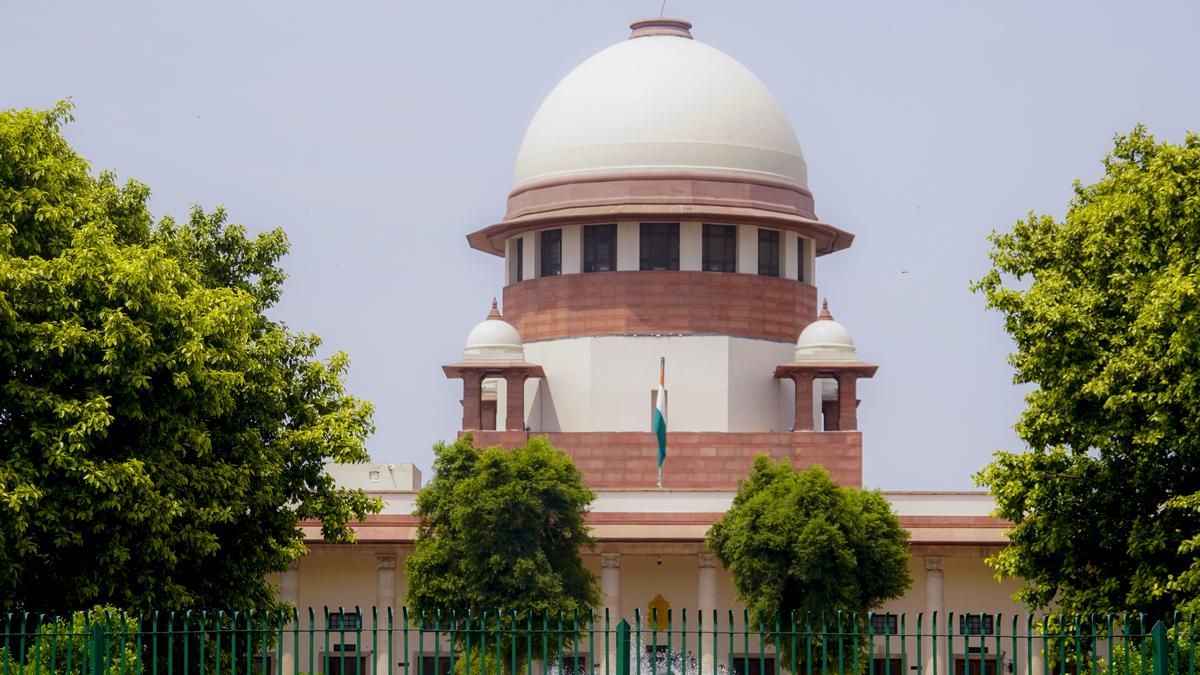Description

Copyright infringement not intended
Picture Courtesy: https://indianexpress.com/article/explained/explained-law/how-sc-has-centred-rights-of-the-accused-in-recent-pmla-cases-9545232/
Context:
The Supreme Court has enhanced the protection of the rights of accused under Prevention Of Money Laundering Act, (PMLA).
Details
- The Prevention of Money Laundering Act (PMLA) was introduced in 2002 to curb money laundering.
- PMLA empowered the Enforcement Directorate (ED) to probe money laundering charges and arrest suspects.
- Recently, the Supreme Court has scrutinized the powers of ED.
Key Highlights of the Supreme Court Ruling on Rights of Accused under PMLA
- The Supreme Court highlighted that under Article 22 of the Indian Constitution, an accused has a fundamental right to be informed of the reasons for arrest.
- Previously, the ED was only required to inform the accused orally, but the Court ruled that written grounds must be provided without exception.
-
- This assures that the arrest was lawful and transparent.
- This prevents arbitrary arrests and guarantees that the accused understand and challenge their detention.
- The Court upheld the strict bail conditions under the PMLA while recognising the right to bail under Section 436A of the Code of Criminal Procedure (CrPC).
-
- The provision requires that a person detained for half the maximum time of imprisonment shall be released on bail.
- The Court established that the reasons for arrest must have a high level of proof and be appropriate.
- The Court emphasized that the exception in Section 45, which allows for bail to women if directed by the Special Court, should be applied fairly.
- The Court upheld that confessions obtained by force or practices that violate the right to self-incrimination cannot be accepted as evidence.
Prevention of Money Laundering Act (PMLA)
- It was established to prevent and control money laundering in India.
-
- Money laundering is the process of presenting illegally obtained funds as legitimate while hiding their criminal origins.
- This act establishes a legal basis for seizing and confiscating property resulting from such illegal activity.
- The act was designed to ensure compliance with several global conventions and recommendations, including:
- The Vienna Convention (1988) on combating drug trafficking and related money laundering activities.
- The Financial Action Task Force (FATF) Recommendations (1990) to set international standards for anti-money laundering measures.
- United Nations Resolutions (1990) to tackle the drug problem and related financial crimes.
Key Highlights of the PMLA Act
- The Enforcement Directorate (ED) is responsible for enforcing the PMLA.
-
- It has wide authority, such as issuing arrest warrants, executing raids, and making arrests.
- The Act states that anyone found guilty of money laundering will be imprisoned for three to seven years; however, the maximum punishment may be extended to ten years instead of seven.
- The Director or an officer above the Deputy Director may attach property believed to be "proceeds of crime" for 180 days.
- The Adjudicating Authority, assigned by the central government, resolves disputes involving money laundering matters.
- Under the PMLA, if someone is accused of money laundering, they have to prove that their assets are illegal. This transfers the burden of proof to the accused.
- The Appellate Tribunal hears appeals against Adjudicating Authority judgements.
Enforcement Directorate (ED)
●It was established in 1956 to enforce economic offense regulations.
●It operates within the Department of Revenue, Ministry of Finance.
●The ED is responsible for enforcing three major laws:
- The Prevention of Money Laundering Act of 2002 (PMLA)
- The Foreign Exchange Management Act of 1999 (FEMA)
- The Fugitive Economic Offenders Act of 2018 (FEOA).
●The headquarters is in New Delhi and has regional offices in Mumbai, Chennai, Chandigarh, Kolkata, and Delhi.
|
Concerns with the PMLA
- The enormous authority granted to the ED raises questions about accountability and transparency.
- The law imposes responsibility on the accused to prove their innocence. This can make it difficult to secure bail and result in lengthy judicial proceedings.
- Despite the strict procedures, the PMLA has a relatively low conviction rate.
-
- Many people involved in money laundering suffer lengthy trials and asset seizures, even if they are not convicted.
- In the last ten years, the Enforcement Directorate has filed 5,297 money laundering charges, with only 43 trials completed.
- While the PMLA allows for the attachment of properties linked to money laundering, its practical implementation can be harsh.
-
- It might make it difficult for people to keep their dignity and continue running their businesses or earning a living.
- The ED lacks the technical skills and advanced training needed to keep up with complex money laundering strategies like digital currency and offshore accounts.
- Money laundering is a transnational crime that involves multiple nations, and the ED faces challenges in obtaining timely and accurate information from foreign stakeholders due to bureaucratic barriers and legal challenges.
Way Forward
- To address overlapping jurisdictions, clearer guidelines and improved collaboration among financial regulatory bodies are required.
- The ED should invest in advanced training programs for officers, with a focus on new money laundering patterns.
-
- Partnerships with foreign organizations and private sector specialists can provide specialized training.
- To provide speedy justice in money laundering cases, judicial reforms are required.
-
- Special courts should be established to handle only PMLA cases, decreasing backlogs and speeding up trials.
- Strengthening international collaboration through bilateral treaties, and participating in global anti-money laundering programs such as the Financial Action Task Force can help the ED identify and recover laundered funds across borders.
Must Read Articles:
ANTI-MONEY LAUNDERING LAW
Source:
Indian Express
Wikipedia
Deccanherald
The Hindu

|
PRACTICE QUESTION
Q. Analyze the role of the Enforcement Directorate (ED) in addressing financial crime in India. How does its approach of investigating economic crimes differ from that of other law enforcement agencies?
|
Array
(
[0] => daily-current-affairs/rights-of-the-accused-in-pmla-cases
[1] => daily-current-affairs
[2] => rights-of-the-accused-in-pmla-cases
)









